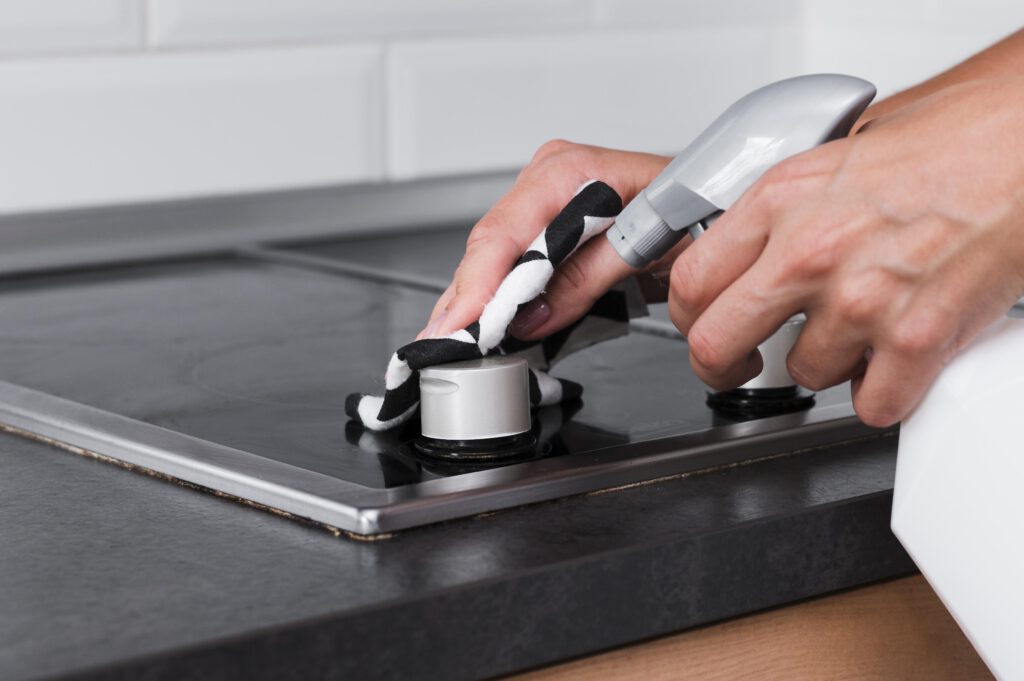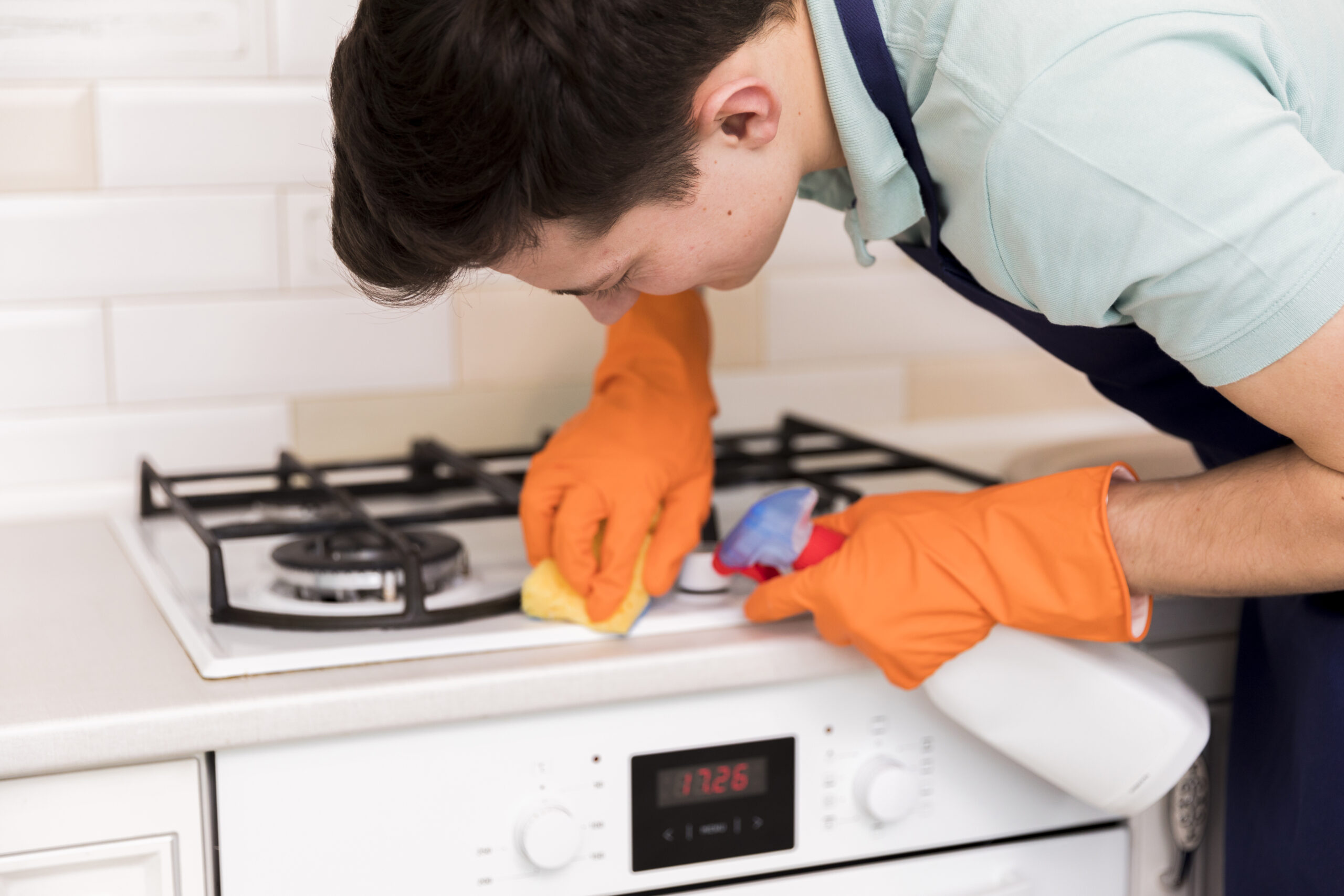Introduction:
Cleaning a stovetop can feel like a daunting task, but with the right approach and a few creative techniques, it can become a straightforward and even satisfying part of your kitchen routine. Whether you’re dealing with stubborn stains or just a bit of everyday grime, keeping your stovetop sparkling clean not only enhances the look of your kitchen but also ensures a more hygienic cooking environment. Here’s a detailed guide on how to tackle stovetop cleaning with ease and efficiency.
1. Gather Your Supplies
Before diving into cleaning, gather the necessary supplies. You’ll need:
- A soft cloth or sponge
- Mild dish soap
- Baking soda
- White vinegar
- A plastic scraper or non-abrasive pad
- A bowl of warm water
2. Start with the Basics
Begin by removing any removable parts from the stovetop, such as burner grates, drip pans, and knobs. Soak these parts in a bowl of warm, soapy water to loosen any grease or food particles. For glass stovetops, gently wipe the surface with a damp cloth to remove loose debris before moving on to more intensive cleaning.
3. Create a Cleaning Paste
For stubborn stains and burnt-on residue, a baking soda paste works wonders. Blend a few tablespoons of baking soda with a small amount of water until you achieve a thick, paste-like consistency. Apply this paste to the stained areas of the stovetop, focusing on any burnt spots or sticky residues. Wait 15-20 minutes for the paste to penetrate and soften the buildup.
4. Scrub and Rinse
Using a soft cloth or non-abrasive sponge, gently scrub the stovetop in circular motions. The baking soda paste will help lift and dissolve the stubborn stains without scratching the surface. For extra dirty spots, you can use a plastic scraper to carefully remove any leftover residue. Once you’ve finished scrubbing, wipe down the stovetop with a clean, damp cloth to remove the baking soda paste.
5. Tackle Grease and Grime
If grease remains, sprinkle a little baking soda directly onto the greasy areas and spray with white vinegar. The combination will fizz and bubble, helping to lift the grease. Wipe the area with a damp cloth or sponge, and rinse thoroughly with clean water.
6. Clean the Burner Parts
While the stovetop is drying, clean the removable parts that were soaking. Use a sponge or brush to scrub away any grease and food particles. For stubborn spots, apply a bit of baking soda or a mixture of vinegar and water. Wash them thoroughly and let them dry completely before reattaching.

7. Shine and Polish
To give your stovetop a sparkling finish, use a glass cleaner or a solution of equal parts water and white vinegar. Spray the cleaner on the surface and wipe it down with a soft cloth to remove streaks and add shine. For gas stovetops, carefully wipe around the burner area to ensure no residue is left.
8. Regular Maintenance
To keep your stovetop looking pristine, make cleaning a regular part of your kitchen routine. After each use, wipe down the surface to prevent build-up and reduce the need for deep cleaning. Regular maintenance helps avoid the accumulation of grime and makes future cleaning sessions much easier.
9. Safety Precautions
Always ensure the stovetop is completely cool before starting the cleaning process. For electric stoves, unplug the appliance if possible to avoid any electrical hazards. Be cautious when using cleaning products and avoid abrasive materials that could damage the surface.
Conclusion:
You can make stovetop cleaning a breeze with the right approach.. With a few simple techniques and regular maintenance, you can keep your stovetop gleaming and ready for your next culinary adventure. By employing these creative cleaning methods, you’ll not only enhance the appearance of your kitchen but also ensure a hygienic and pleasant cooking environment. Embrace the satisfaction of a clean stovetop and enjoy the ease of maintaining a sparkling kitchen.

